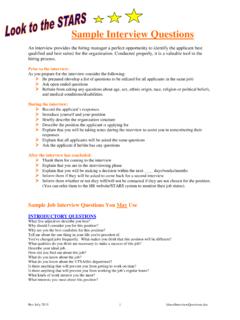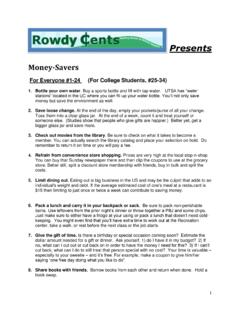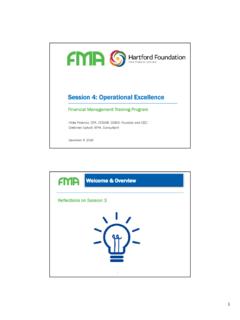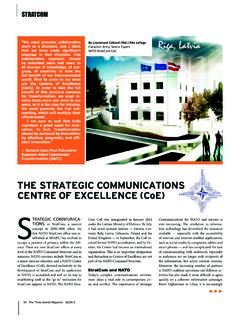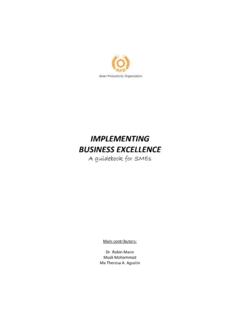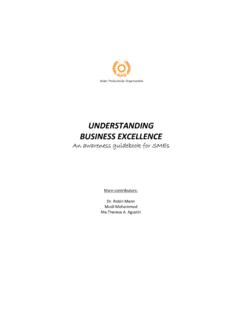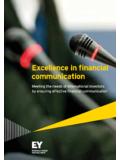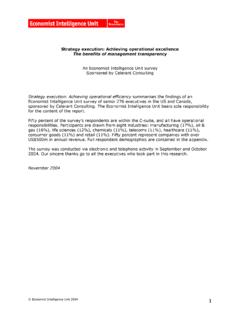Transcription of Student Success Task Force - utsa.edu
1 Student Success Task ForceMarch 19, 2018 Work to date has made an impact on graduation and retention rates Data from UTSA Institutional ResearchUTSA IS ON THE RISE10%20%30%40%50%60%70%80%Fall 2010 Fall 2011 Fall 2012 Fall 2013 Fall 2014 Fall 2015 Fall 20161Yr Ret2Yr Ret3Yr Ret4 YrGrad6 YrGradincrease in 4 and 6 year graduation rates across 5 years of cohorts7%UTSA Retention and Graduation TrendsCohorts Fall 2010 to Fall 2016 Graduation rate is a lagging indicator and thus retention trends by cohort show projected increase in graduation rate. More opportunity for improvementCONTINUE TO STRIVE TOWARDS Student SUCCESSF irst Year Retention Currently 74% 5 Year Goal 78% 10 Year Goal 85%Four-Ye a r Graduation Rate Currently 22% 5 Year Goal 25% 10 Year Goal 34%Six-Ye a r Graduation Rate Currently 37% 5 Year Goal 44% 10 Year Goal 60%A True Perspective on Outcomes Demands a New Set of Success Performance IndicatorsWHAT ARE THE NATIONAL CHALLENGES?
2 22 Drop out of college35 Graduateand are working a job requiring a BA by age 2733 Earnan associate s28 Graduatebut are underemployedFor Every 100 Students Who Start a Bachelor s enrolled after six yearsGraduate more less time, at lower betterpost-grad deliver a betterReturn on EducationOur new Student Success mandate:Source: Shapiro D, et al., Completing College: A National View of Student Attainment Rates Fall 2010 Cohort (Signature ReportNo. 12) National Student Clearinghouse Research Center (2016); Federal Reserve Bank of NY: #; EAB interviews and analysisMembers Prioritizing an Expanded Set of Institution Performance Indictors That Match GoalsBREAKING FREE OF THE FY RETENTION TUNNEL VISIONGRADUATE MOREG enerating a Better Return on EducationLESS TIME/LOWER COSTBETTER OUTCOMES First-Year Retention Sophomore Retention Transfer Retention Overall Persistence Six-Ye a r G r a d u a t i o n Degrees Conferred Credit Attempts per Term DFW Rate Four-Ye a r G r a d u a t i o n Average Time to Degree Excess Credits at Graduation Career Readiness IndexSource.
3 EAB interviews and Retention and PersistenceAll entering college students remain, re-enroll, and continue their undergraduate education (inclusive of transfer and part-time students)Educational AttainmentAll entering students persist to degree completion and attainment of their degree, program, or educational goal within a timeframe that does not create diminishing returns (4 year and 6 year graduation improvements)Academic AchievementStudents achieve satisfactory or superior levels of academic performance as they progress through and complete their college experienceStudent AdvancementStudents proceed to and succeed at subsequent educational and occupational endeavors for which their college degree or program was designed to prepare themWHAT IS Student Success AT UTSA?
4 UTSA Student EXPERIENCE TO CREATE BELONGING AND ENGAGEMENTM ajor milestones that impact students throughout the college journey that have an impact on both social and academic belongingOnboardingRetention and BelongingAcademic SupportLeadership & Professional PreparationFinancial AidAdvisingGraduation ActionOnboarding Increase yield w/ focus on summer melt Send financial aid awards earlier Conduct transfer credit evaluation prior to application fee Resources: financial recruiters and increased academic engagement for presidential scholars Expand LEAD I program beyond conditional admit to students performing in the murky middle Expand outreach efforts Resource: Secure funding beyond 3 year initial grant Retention and Belonging Tr a c k c o h o r t s f o r re t e n t i o n u s i n g re a l t i m e d a t a re p o r t i n g Resource.
5 Hire a data person Centralize peer mentoring programs to improve training and increase proactive accountability Leverage first year experience to create a continuum of belonging KEY RECOMMENDATIONSI nitial areas of focus to make a strong impact and accelerate positive retention and graduation ratesAcademic Support Engage faculty to track progress of students in math, redesign courses, and comp embedded tutor courses Resource: Secure funding for increased space and program capacity financial Aid Optimization Define holds and provide proactive communication to students to adjudicate Identify key financial risk factors Utilize early alert system to proactively notify students and staff of Student financial barriers Expand financial literacy and make information broadly available via multiple communication mechanisms Advising excellence Strategic campaigns for at-risk students 100% completion of registration campaigns and students that submit a degree plan Decrease the % of students who are undeclared by 60 credits Resources.
6 Centralized space; transfer Student and prospective Student advisingLeadership and Professional Preparation Create a Student -facing plan that outlines high impact practices available to a Student throughout their college journey and publish on a portal Require students to input their experience reflections into DegreeWorksKEY RECOMMENDATIONSI nitial areas of focus to make a strong impact and accelerate positive retention and graduation ratesGraduation Action Provide consistent and coordinated communication about the graduation application process Revise graduation application to make it shorter and more accessible Data.
7 Technology & Progress Tracking DATA: Implement Real-Time Performance Indicators and Schedule Reports TECHNOLOGY: Conduct technology system audit to identify and understand which technology systems are currently being used on campus, for what purpose, by which stakeholders Potential Resource Need: A data and assessment person; technology system owner(s) communication Coordinate Student Success action team progress tracking Execute communication plan to engage stakeholders in Student Success culture and ensure awareness about progress towards achieving Student Success goalsHOW DO WE GET THERE? Stakeholders in a Unified Vision of Student Success Lay the foundation for collaboration among Student support units by introducing common definitions for Student Success .
8 Help units define their role and contribution to this initiative and communicate the role technology will play in realizing this Shared Governance for Student Success Collaborate with support units to identify priority next steps. Develop a sustainable, scalable approach to accelerating Build Collaborative Practices Facilitate inter-unit collaboration and develop processes and protocols that facilitate information sharing, process oversight, and data Optimize Student -Centered Care Coordination Improve existing processes for care coordination with wraparound trainings and cross-departmental committees designed to implement rapid change.
9 Student Success Task Force ChargeThe Student Success Task Force will develop an integrated Student Success plan that includes goals, metrics, accountability and self-assessment. The plan will adopt a Student -focused strategy and consider a pipeline continuum from K-12 through recruitment, enrollment, academic progress, career services and placement. This task Force will examine best practices from other institutions and think expansively about administrative structure, accountability and resources. Building on the great work of the SSTF, we expect to launch action teams in TASK FORCES IN PLACEFUTURE Student Success GOVERNANCE STRUCTURES tudent Success Task Force Chair (Rhonda Gonzales): Reports progress and escalates challenges to Presidential Joint Task Success Task Force (SSTF): Change agent to hard wire culture of Student Success .
10 Tracks progress to ensure accountability, collaboration, and lack of redundancies. Student Success Task Force Champions: Designated member of SSTF serves as a champion for each focus area to collect, monitor, and report out progress. Responsible for convening individuals executing work in support of each Campus & Guide Leadership Team: Focuses on implementing and leveraging functionality to support initiatives, Student outreach, coordinated care network and Success Action Teams: Comprised of initiatives, projects, grants currently underway, as well as, new action areas identified by the and BelongingAcademic SupportFinancial Aid OptimizationData & Progress TrackingAdvising ExcellenceCommunicationGraduationActionS tudent Success Action TeamsLeadership & Professional PreparationQuestions?
